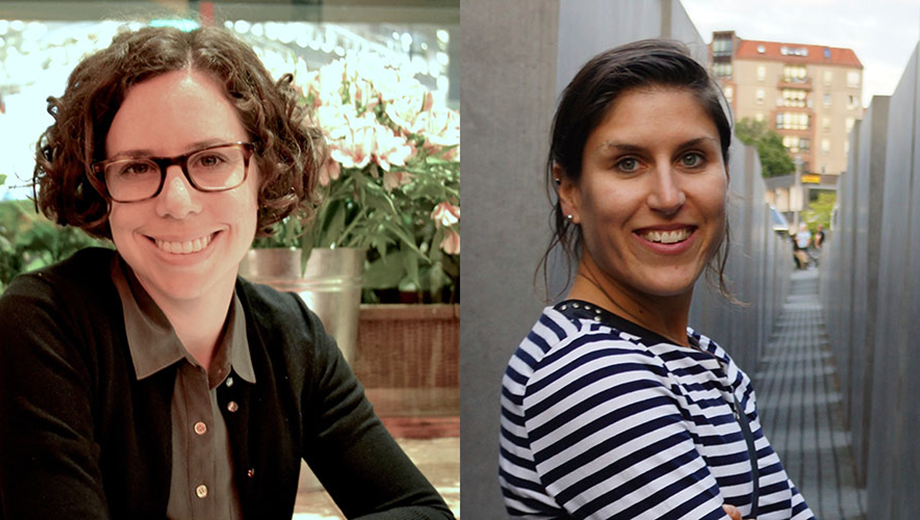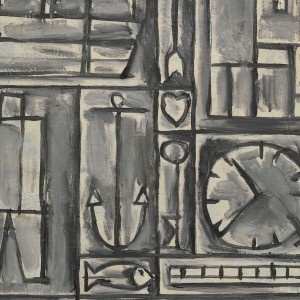Art historian Megan Sullivan believes in studying and even celebrating the moments of “strangeness and failure” in Latin American modernism: “moments when those transferences don’t quite work as planned, or strange things happen because you’re moving these forms and ideas to places where they didn’t originate.” As an example, she offers the Uruguayan painter Joaquín Torres-Garcia, one of the first abstract artists in Latin America.
Born in 1874, Torres-García went to Spain in 1891 to study painting, and worked there and in France for nearly 40 years with the likes of Piet Mondrian. Returning to Uruguay in 1934, he painted Mondrian-like grids filled with symbols inspired by ancient art.
“He really wants to imagine an abstraction that could be deeply rooted in the culture of the Americas,” says Sullivan, who frankly doesn’t think the art is always convincing or successful. “But I keep coming back to him, because there’s something about him trying to figure out what it might mean to make a modern, or abstract, or even universal art in the region: he’s one of the first people to really talk about universality in Latin American art.”
Sullivan looks forward to a major retrospective of Torres-García’s work at New York’s Museum of Modern Art beginning October 25.
“I think as I teach more and more, I see how important he is to the story I’m trying to tell,” she says.
While Sullivan’s research focuses on later modernism in Latin America—“the last gasp of Latin American artists trying to position themselves with regard to modernism”—for those interested in learning more about the movement as a whole, she recommends two other artists she considers foundational:
- Wilfredo Lam: “He’s hugely important in terms of picking up on Picasso’s language of primitivism and cubism, but infecting that with certain aspects of Afro-Cuban culture. Picasso developed cubism in part through the study of African masks, so Lam’s use of masks in his paintings reintroduces the cultural source of modernism’s formal innovations.”
- Tarsila do Amaral, known simply as Tarsila: “She’s another artist who deserves some reevaluation. Her work is complex, and, like Lam, combines modernism with national and racial questions. She was part of a group of artists and writers in 1920s Brazil who proposed anthropophagy—a sort of cultural cannibalism—as a strategy for forming a unique Brazilian culture from the influence of Europe.” According to Sullivan, the Art Institute of Chicago is planning a rare US show of Tarsila’s work in 2017.
On the modernist literature front, James Joyce’s Ulysses, T. S. Eliot’s The Wasteland, and Virginia Woolf’s To the Lighthouse are frequently cited as staples, but English Language and Literature PhD student Rachel Kyne discusses some lesser-known modernist works worth reading:
- “In Djuna Barnes’s Nightwood (1936), modernist experimentation with language and character is pushed to an extreme, producing some of the most beautiful prose you’ll ever read. Barnes frames the heightened politics of the 1930s through the socially marginalized bohême of Paris—Jews, lesbians, circus performers, criminals, and cross-dressers. Through these wildly self-mythologizing characters who are nonetheless burdened by their own bodies and pasts, notions of race as a biological inheritance or a cultural projection are pitted against each other, as are ideas of individuals as self-directed agents or compulsive animals. It will leave you unsettled, wondering, and estranged.”
- “The plot of Joseph Conrad’s The Secret Agent (1907) revolves around an actual attempt to blow up the Greenwich Observatory in 1894. Populated by anarchists, police officers, innocents, and spies, Conrad’s London is full of eyes and ears haunted by the continual threat of terrorism. Sound familiar?”
- “Rites of Spring: The Great War and European Cultural History, by Modris Eksteins (1989), is a fantastic book on World War I. Eksteins gives a longer history of French and German culture clashes and contextualizes the outbreak of war through the aggressive experiments of European avant-gardes, like Stravinsky’s titular ballet, before July 1914. Extremely readable, well researched, and hard hitting.”
- “Elizabeth Bowen’s novel The Heat of the Day (1948) is set in London during the Blitz and is part spy mystery, part romance, and part cultural chronicle of daily life in the midst of urban geopolitical crisis.”


